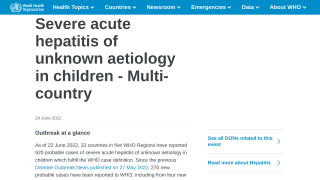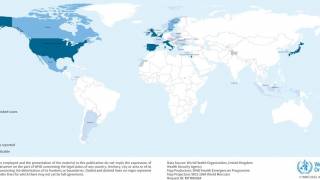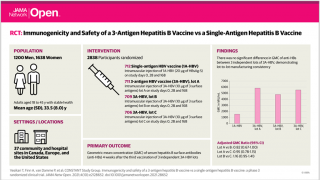World Hepatitis Summit Focuses on Eliminating Hepatitis

On the eve of the World Hepatitis Summit, the World Health Organization (WHO) reports increasing global momentum in the response to viral hepatitis.
A record 3 million people were able to obtain treatment for hepatitis C over the past two years.
"We have seen a nearly 5-fold increase in the number of countries developing national plans to eliminate life-threatening viral hepatitis over the last 5 years," says Dr. Gottfried Hirnschall, Director of WHO's Department of HIV and Global Hepatitis Programme.
"These results bring hope that the elimination of hepatitis can and will become a reality."
Hosted by the Government of Brazil, the World Hepatitis Summit 2017 aims to encourage more countries to take decisive action to tackle hepatitis, which still causes more than 1.3 million deaths every year and affects more than 325 million people.
"We cannot lose sight of the fact that last year 194 governments committed to eliminating viral hepatitis by 2030. For sure we are still a long way from this goal but that doesn’t mean it’s some unattainable dream. It’s eminently achievable. It just requires immediate action," says Charles Gore, President of World Hepatitis Alliance.
In 2016, 1.76 million people were newly treated for hepatitis C , a significant increase from the 1.1 million people who were treated in 2015.
The 2.8 million additional people starting lifelong treatment for hepatitis B in 2016, was a marked increase from the 1.7 million people starting in 2015.
As of 2015, an estimated 1 in 10 people living with hepatitis B, and 1 in 5 people living with hepatitis C, were aware of their infection.
Largely due to increases in the uptake of the hepatitis B vaccine, hepatitis B infection rates in children under 5 fell to 1.3% in 2015, from 4.7% in the pre-vaccine era.
However, the delivery of other prevention services, such as birth-dose vaccination for hepatitis B, harm reduction services for people who inject drugs, and infection control in many health services, remains low.
This has led to continuing rates of new infections, including 1.75 million new hepatitis C cases every year.
"We cannot meet the ambitious hepatitis elimination targets without innovation in prevention interventions and approaches, and implementing them to scale,” said Dr Ren Minghui Assistant Director-General for Communicable Diseases, WHO.
“The great successes of hepatitis B vaccination programmes in many countries need to be replicated and sustained globally in the context of moving forward to universal health coverage."
There are several types of hepatitis viruses including A, B, C, D and E. The viruses have many differences from each other, however, the one thing all five types of hepatitis have in common is they can cause liver damage.
Most people today become infected with the Hepatitis C virus by sharing needles or other equipment to inject drugs.
For some people, hepatitis C is a short-term illness, but for 70%–85% of people who become infected with Hepatitis C, it becomes a long-term, chronic infection.
Although vaccines exist for hepatitis A and hepatitis B, there is not a Hep C vaccine available.
Several Hep C vaccines are currently under development.
Our Trust Standards: Medical Advisory Committee

























